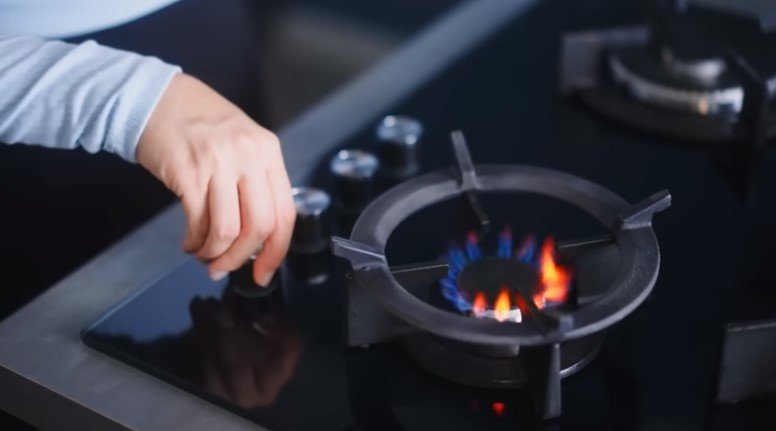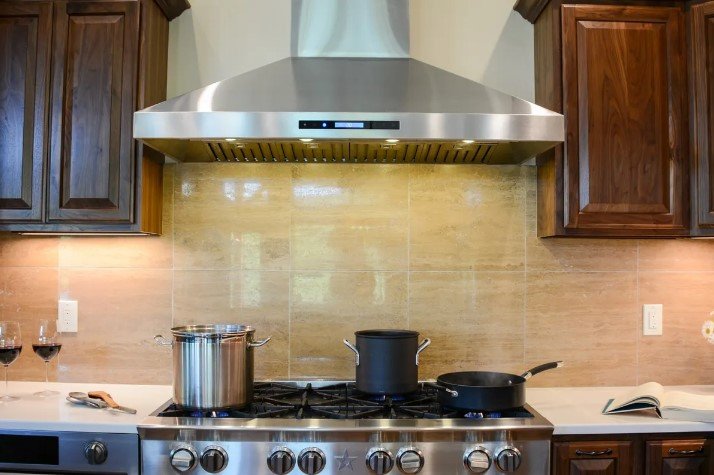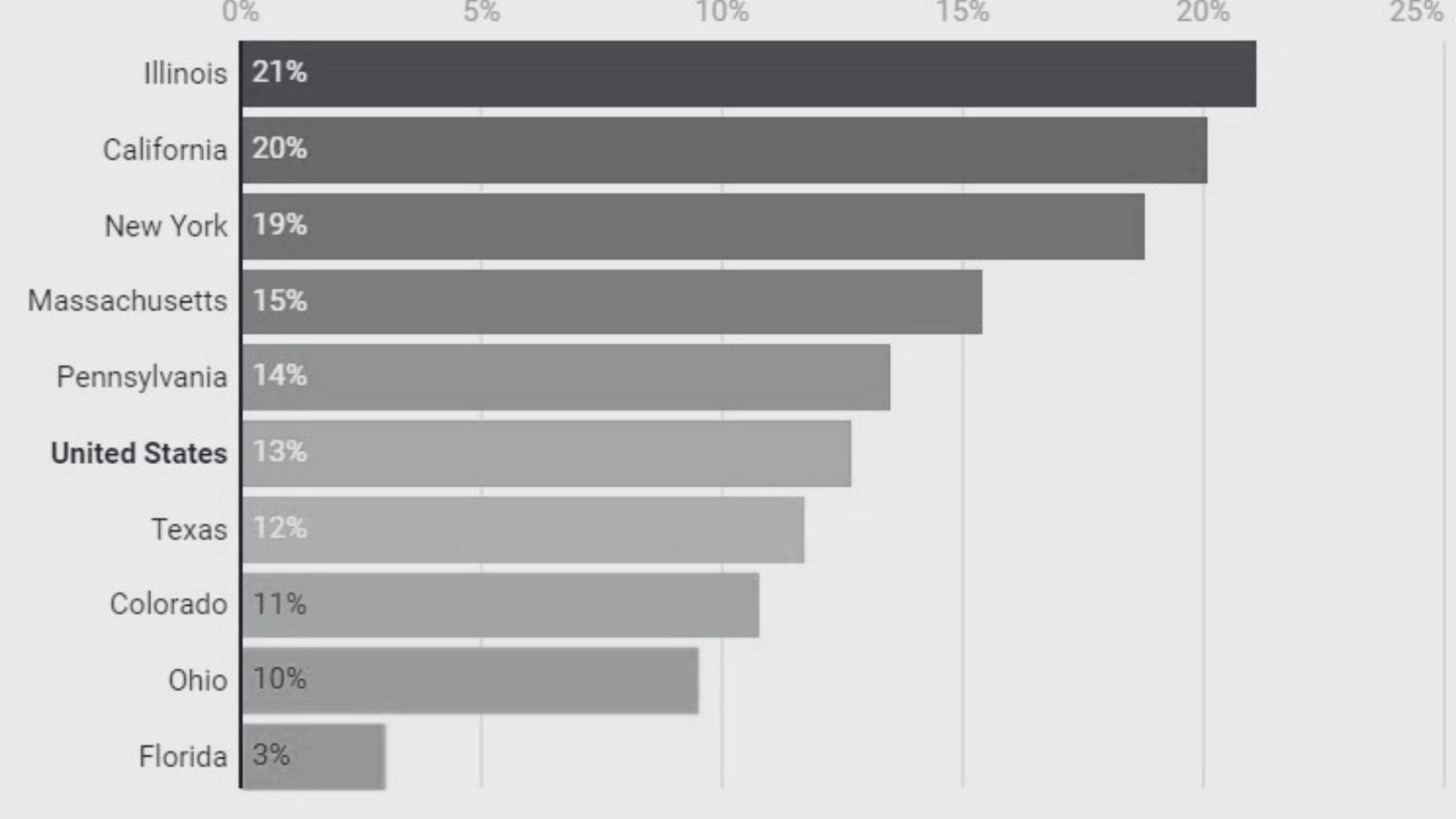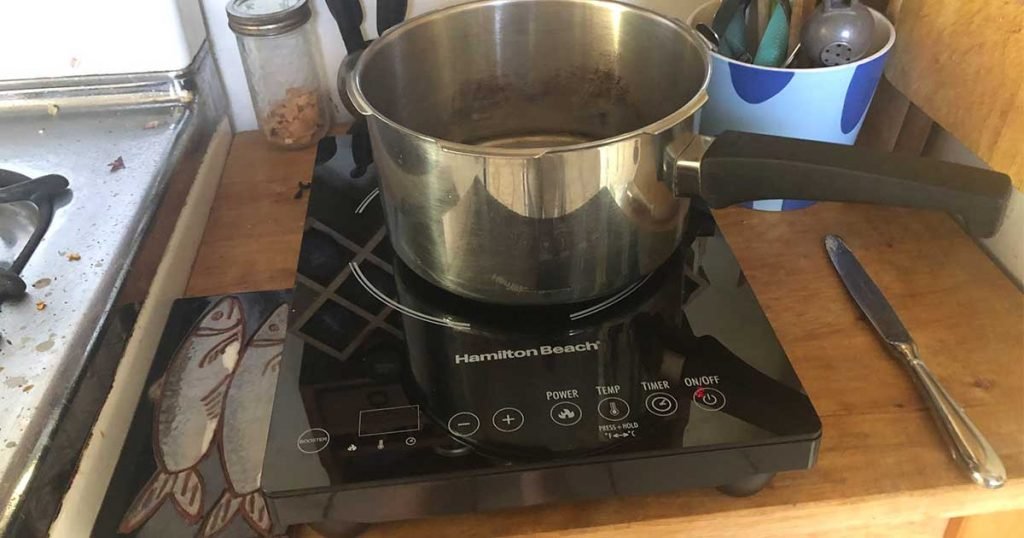Yes. Gas stoves need sufficient ventilation to get rid of the combustion by-products and improve air quality.
Behind the blue flames on your gas burners lies a hidden danger you need to vent out. Gas stoves can actually release a toxic cocktail of air pollutants right into your home—we’re talking nitrogen dioxide, carbon monoxide, and even benzene just from boiling pasta.
Now, you might be wondering…isn’t my hood fan enough to deal with some cooking fumes? Unfortunately, no. Research shows those standard kitchen vents don’t capture all the nasty byproducts released by your trusty gas range.
We will tell you why and much more. Just read on
Do Gas Stoves Require Venting?
Absolutely!
Venting is not legally required for gas stoves in most areas. However, we strongly advise installing ventilation. Gas combustion produces greenhouse gases, respiratory irritants, organic compounds and carbon monoxide.
Good kitchen ventilation immediately captures these emissions right at the source before they build up indoors. Without venting, the EPA estimates indoor concentrations of nitrogen dioxide can spike up to 50% above the national ambient air quality standard of 53 ppb.
Repeated exposure, especially for children, raises risks for developing asthma, allergies, and other respiratory issues. Venting gas stoves is critical for health.
How Much CFM Do You Need to Vent a Gas Range?
The CFM (cubic feet per minute) rating indicates a range hood’s airflow and venting power. For a 30-36 inch gas range, experts recommend a minimum venting power of 600 CFM on the highest fan setting.
This heavy-duty CFM rating ensures the hood can quickly capture and redirect the entire volume of gas combustion byproducts as soon as they are produced. Afterburner ignition, letting the hood run for 5 minutes before cooking helps purge any existing kitchen pollution.
Ductless range hoods that merely recirculate air cannot effectively eliminate gas stove pollution. Only ducted vents flowing outside completely remove the contaminants. Look for CFM of 600-1200 based on kitchen size and stove BTUs.
Also, ensure the hood is size-appropriate, extends past the front and sides of the range, and has capture panels that practically eliminate leaks.
How Much Carbon Monoxide Does a Gas Oven Produce?
Gas ovens can leak carbon monoxide from faulty burner ignition, back-drafting, or cracks in heat exchangers. Any small leak poses a high risk because carbon monoxide is invisible, odorless, and quickly toxic.
Thankfully, leaked CO from gas ovens measured in homes averages only 0.5 to 5 parts per million, well below the OSHA short-term exposure limit of 200 ppm. Having a working CO alarm is still crucial, however, in case a serious leak emerges.
Range hoods venting outside provide vital protection by removing any small amounts of CO that do escape around a gas stove’s burners or oven door gaskets. Annual inspections by qualified technicians can also catch leaks early before concentrations escalate.
What Happens When the Gas Stove Is Left On?

Leaving a gas burner on without igniting it is not as safe as leaving an induction stove on. It allows a buildup of unburned natural gas or propane to collect. If the gas then ignites from another location, this could lead to an explosion.
Another risk is gas leaks. A minor leak from faulty stove connections, if undetected over days or weeks, can gradually fill a space with dangerous amounts of methane.
Venting pulls away any small leaks before hazardous fuel concentrations occur. For maximum safety, make it a strict habit of immediately lighting burners after turning gas on and double checking the knobs are off when done cooking.
Benefits of Venting Gas Stoves
Venting a gas stove provides numerous advantages beyond just improving health and safety. Here’s what we are talking about:
- Removes moisture – Gas combustion releases water vapor, which can lead to mold growth when allowed to accumulate indoors. Venting removes this excess humidity before it permeates walls, cabinets, and window condensation.
- Prevents grease buildup – The high-velocity air movement captures cooking grease before it has a chance to spread and cling to surfaces. This saves homeowners from frequent heavy grease scrubbing.
- Eliminates Odors – Smelly cooking odors contain VOCs that get absorbed into fabrics and furnishings without proper venting. Venting whisks these smells outside rather than letting them linger on curtains and couches.
- Fire prevention – Venting pulls away unburned fuel from any leaks, preventing dangerous concentrations that could ignite and explode. Even small gas leaks vented outside reduce this hazard.
- Reduces Noise – The fan noise from overhead ventilation helps mask the hissing and roar sounds generated by gas combustion at the burners. Less noisy distractions make cooking less stressful.
- Prevents mold and mildew formation – Gas combustion releases 4-6% water vapor, which can lead to moist air and resulting mold issues without proper moisture removal. Venting maintains optimal indoor humidity.
- Energy savings – Some range hoods have heat recovery systems that retain the energy lost up the vent and return it to the home, reducing HVAC costs.
The Danger of Non-Vented Gas Ranges
The dangers of allowing using a gas range without ventilation include:
- Respiratory irritation – Nitrogen dioxide, carbon monoxide, particulate matter and other byproducts irritate lungs and worsen conditions like asthma, especially in children.
- CO poisoning – Carbon monoxide is odorless and deadly. Without immediate venting, any leaks can prove fatal as CO concentrations escalate indoors.
- Appliance failure – Corrosion and damage from moisture can shorten the operating lives of stoves and refrigerators.
- Fire hazards – Undetected gas leaks can accumulate to explosive concentrations from just one spark in an unvented kitchen.
- Higher risk of illness – Immune-compromised individuals and the elderly are at greater risk for respiratory infections and pneumonia without proper indoor air quality.
The Bottom Line
All cooking pros and safety experts agree – properly venting your gas range is 100% non-negotiable for your health.
Sure, a good vent may set you back some dollars. But can you really put a price on your family’s health and safety? We think not. Do your home a solid and install sturdy ductwork to get rid of combustion byproducts. If you want an alternative, go for electric ranges.
Common Questions
Can you put a gas stove in a house without ventilation?
It’s not recommended. Lack of ventilation allows dangerous pollutant concentrations to accumulate indoors from gas combustion. Proper venting should always be installed.
Will an oven vent get rid of carbon monoxide?
No. While venting the range does help remove small amounts of CO, only CO alarms specifically detect and alert occupants about hazardous levels in case of leaks.
Can a bathroom exhaust fan be used to vent a gas oven?
No. Bathroom fans lack the CFM power and pollutant capture design to effectively vent cooker emissions. Proper cooker hoods flowing outside are required.
Are older gas ovens more dangerous?
Yes. Old gas appliances are more likely to have cracked heat exchangers or faulty door gaskets that can leak higher levels of CO. Upgrading to a newer certified gas range is safer.
What happens if you don’t turn on the stove vent?
Hazardous levels of nitrogen oxides, VOCs, carbon monoxide, and other irritants can build up indoors, raising risks of respiratory issues, allergies, headaches and more.
Do gas cookers need an extractor fan?
Yes, a dedicated extractor hood and ducting specifically designed for a gas cooker is essential to capture all the combustion byproducts and direct them safely outside.
Is a 600 CFM range hood good enough?
600 CFM is the bare minimum recommended for venting a 30-36 inch gas range. Larger, commercial-grade 800-1200 CFM models provide greater pollutant capture and faster air changes.




